How to recover data from an iPhone or iPad backup
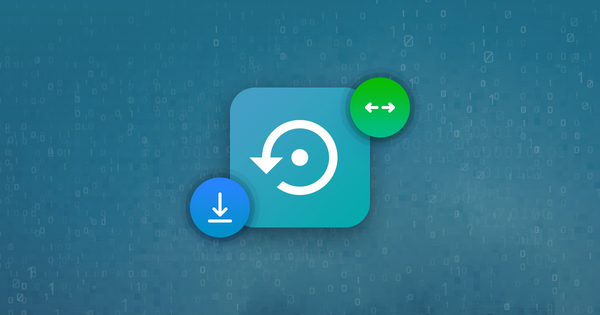
Difficulty: easy
Steps: up to 3
Time needed: 5 minutes
An introduction to iPhone backup recovery
Apple's iTunes lets iOS users create backups of their iPhones, iPads and iPods. Over the years, these backups have come in a variety of formats, and been protected with a number of different encryption schemes. Apple's backup system does a great job of safely copying user data so users can later reset and fully restore it to their devices.
Despite this, there are many situations where a user doesn't want to completely overwrite what's on their phone and restoring their contents. Users who have lost phones need to extract data from these backups without having another phone to restore to. Users who are on a different version of iOS may not be able to fully restore, and may need to manually get the files. Users who have accidentally deleted files or apps on their iPhone may need to browse iTunes backups and recover an earlier version of that data: without having to completely restore their phone to an older point in time.
Being able to inspect, archive and modify iPhone backups is important, and Reincubate iPhone Backup Extractor allows for all of this and more. It can reset your Screen Time passcode, recover content that was deleted prior to a backup being taken, and even convert an iCloud backup into an iTunes backup.
It's possible to get all of the following data -- and more -- from an iTunes backup:
iMessages

Videos
Photos
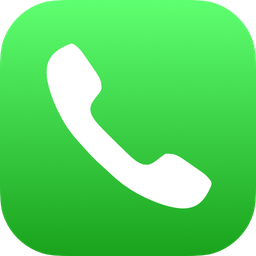
Call logs
Contacts
Notes
Calendar

App Data
Everything else
Getting started with iPhone backup data
We've split this guide into sections to help you quickly find the information you need.
- How to see what's in your iPhone backup
- How to recover deleted data from an iPhone backup
- How to restore an iTunes backup
- Frequently asked questions
We recommend checking out the frequently asked questions, as we cover a huge amount of information there. We've probably heard your question before. At the top and bottom of this page you'll see there's information on contacting us. Our support team -- and in fact, the whole team -- see and respond to user questions. We love to help, so don't be a stranger.
If you don't have an iTunes backup -- or don't know whether you have one -- this guide will help you find or create one.
Finally, a word on our software, iPhone Backup Extractor. The free edition includes a huge amount. It'll list your backups, preview everything that's in them, extract four files at a time, and much more. You needn't buy a license to be able to do most of the things in this guide, but if you dig what we're doing or would like to unlock more of the app, then we really appreciate your support.
Let's start! If you'd like to follow along to a video, we've included one below:
How to see what's in your iPhone backup
Let's say you have an iTunes backup and rather than restoring it to an iPhone or iPad, you want to view what is in it, and extract its files to your computer. The best way to do this is with iPhone Backup Extractor, which extracts these files (even deleted ones!) in a regular, accessible format.
Browsing an iTunes backup is easy with a few clicks using the free edition of iPhone Backup Extractor:
-
Download and install iPhone Backup Extractor, then open it. It runs on PCs and Macs.
On the left-hand side you'll see an iTunes backup browser, showing all of the backups in iTunes' default backup folder. Select the iTunes backup you'd like to work with by clicking it. If the backup file is encrypted, you'll be prompted for the password needed to access it.
If you have an iTunes backup located somewhere else, you can tap the
+button and tell iPhone Backup Extractor about additional locations to search for backups.If no backups appear, it means you don't have one created for your PC or Mac's user account. It's easy and free to create one, and we've got instructions on how to create an iTunes backup in this guide. If you use iCloud backups, you can download your iCloud backup and convert it to an iTunes backup with our guide.
![iTunes backups shown in iPhone Backup Extractor iTunes backups shown in iPhone Backup Extractor]()
iTunes backups shown in iPhone Backup Extractor Once the backup has loaded, you'll see information about your iTunes backup, and a handful of tabs for viewing and editing different parts of it.
As you can see in the screenshot here, iPhone Backup Extractor will show you all sorts of information about your iPhone, including the firmware, IMEI, and whether it's an old classic iPhone, the latest-and-greatest iPhone, or something in between.
You'll also get to see how many contacts are stored in your iPhone backup, whether the backup contains all those photos you've been snapping away, and whether those sentimental SMS messages are stashed away for safe-keeping.
![iPhone Backup Extractor's overview screen iPhone Backup Extractor's overview screen]()
iPhone Backup Extractor's overview screen Select the "Preview" tab and you'll be able to see most of the main types of data available in your backup.
Creating, restoring and recovering data from iTunes sounds complicated, but it needn't be. Our iTunes backup extractor has four modes for recovering data:
Overview mode: easy to use summary of iPhone data, with single-click export to PDF, HTML and CSV
iPhone Backup Extractor's overview summarises the main data types that are in the iTunes backup by showing a set of app icons. Clicking any of the icons will immediately start an export of that app's data, and you have a choice of formats for this.
![iPhone Backup Extractor in Overview mode iPhone Backup Extractor in Overview mode]()
iPhone Backup Extractor in Overview mode Preview mode: for previewing core iPhone data like messages, contacts and calls
"Preview mode" gives you a look straight into the data stored in your iTunes backup: it's shown similarly to how it would be shown on an iPhone or iPad. Our preview includes data that was deleted prior to the backup, so you'll see even more than you would if you simply restored the backup. For more on how that works, see our section on recovering deleted data below. You can select entries in the preview and then click "Extract" to export them to your computer.
![iPhone Backup Extractor showing photos in "Preview mode" iPhone Backup Extractor showing photos in "Preview mode"]()
iPhone Backup Extractor showing photos in "Preview mode" App view mode: for extracting third-party app data from iTunes backups
Our "App view" mode shows you each of the apps you had installed at the point your iTunes backup was created. It shows a list of those apps, and if you select an app, it'll let you jump straight into getting that apps' files. This mode is particularly helpful when you want to learn more about how an app stores data, or if you want to get your files from an app that we don't highlight on the overview. Easy! You can export files from "App view" with a single click.
![iPhone Backup Extractor in App view mode iPhone Backup Extractor in App view mode]()
iPhone Backup Extractor in App view mode
Expert mode: browse the entire backup's files, and export, edit or replace them
"Expert mode" is particularly popular with our forensic users and developers, as it lets you see every file stored in an iTunes backup. You can drag them out to your computer, or right-click and edit or replace them.
![iPhone Backup Extractor in Expert mode iPhone Backup Extractor in Expert mode]()
iPhone Backup Extractor in Expert mode
How to recover missing or deleted data from an iTunes backup
You might be surprised, but it's possible to recover deleted files and data from iTunes backups. There are two techniques for this. The first is obvious: if the backup was taken prior to the data being deleted, you can simply extract the data you need using the steps we laid out above in viewing an iTunes backup.
The second technique is really cool, and lets iPhone Backup Extractor recover data that was deleted before the backup was taken.
How can I recover text messages, notes or contacts which were deleted before a backup?
iPhone Backup Extractor extracts data from iPhone backups, from iCloud backups, and from other iCloud data. As such, so long as the last backup was taken before the data was deleted, it will recover your information automatically. However, if the data was deleted before your backup was taken, all is not lost.
iOS devices don't regularly purge deleted data from their database files, so it is often possible to recover deleted data, even from before a backup was taken. This works particularly well for iMessage, SMS, WhatsApp, note and contact data. (By extracting the SQLite databases from your backup in Expert mode, and opening them in Notepad, you should see fragments of any data that has been deleted.)
How does recovery of deleted iOS data work?
Reincubate iPhone Backup Extractor has a sophisticated version of this technology integrated with it, saving the need for any forensic recovery process. Our implementation outperforms all of the dedicated SQLite recovery tools we've benchmarked it against.
In addition to this, there are other techniques that we use in the application, and that our support team are able to assist with. One of those involves examining iCloud backup snapshots, which can prove fruitful for recovery of iOS data, and iPhone Backup Extractor can fetch those snapshots for you.
If you'd like to see some data on just how effective iPhone Backup Extractor's undeletion capabilities are, check out our benchmark against the leading forensics tools. Hint: we thrash them.
You can recover deleted data with iPhone Backup Extractor in two simple steps:
-
Ensure that the
Utilities→Show deleted dataoption is enabled. -
Proceed as normal. Deleted data will be included in all exports and previews.

How to restore an iTunes backup
Restoring an iTunes backup to your iPhone or iPad is easy. (If you want to restore an iCloud backup using iTunes, our guide describes how to download and convert iCloud backups to iTunes.)
-
Start iTunes and connect your iPhone or iPad to your computer using a USB cable.
Go to
File→Devices→Restore from backupin iTunes' menu. If you have multiple backups, choose the backup you want to retrieve from the drop-down menu, and click "Restore". You can also click on the device icon, which will open a summary window where you can click "Restore Backup".![Restoring an iTunes backup Restoring an iTunes backup]()
Restoring an iTunes backup -
Wait until the data is transferred to your device. Be careful not to unplug the USB cable too early, as it will interrupt the process and could corrupt data on your device.
Frequently asked questions
The default iTunes backup location depends on whether you're using a PC or Mac. iTunes backups can be found in the following directories:
-
On Windows 10 and recent versions of Windows, backups are stored in:
\Users\(username)\AppData\Roaming\Apple Computer\MobileSync\Backup\ -
On Macs, backups are stored in:
\Users\(username)\Library\Application Support\MobileSync\Backup\
There are a few special cases. For instance, the Windows Store version of iTunes uses a different location, and so does iTunes on Windows XP. We maintain the latest default iTunes backup locations here, and have instructions on how to change the default iTunes backup folder.
When I look in my iTunes backup folder I just see random files, which is which? What are those files in my iTunes backup folder?
iTunes backup folders contain files named according to hex-encoded SHA-1 hashes. Their filenames can differ based on the type of data and the version of iOS that created the backup.
We maintain an up-to-the-minute summary of these iTunes backup files here but have included a short summary below for recent versions of iOS:
| Contents | Real filename | Backup filename |
|---|---|---|
| SMS | sms.db |
3d0d7e5fb2ce288813306e4d4636395e047a3d28 |
| Contacts | AddressBook.sqlitedb |
31bb7ba8914766d4ba40d6dfb6113c8b614be442 |
| Calendar | Calendar.sqlitedb |
2041457d5fe04d39d0ab481178355df6781e6858 |
| Notes | NoteStore.sqlite |
4f98687d8ab0d6d1a371110e6b7300f6e465bef2 |
| Call history | call_history.db |
2b2b0084a1bc3a5ac8c27afdf14afb42c61a19ca |
If iTunes won't restore your iPhone backup, it probably means its corrupt.
We publish a list of steps for diagnosing problems restoring iTunes backups. If that doesn't resolve the problem, see the next question.
Yes. We've got a comprehensive guide on how to repair corrupt backups and recover your data. If you're still stuck, reach out to our support team as we can probably help further. 🚑 There's a lot of fiddly stuff we can help you with.
My iPhone won't turn on and all my data is lost, how can I recover iOS data?
If you have an iTunes backup or use iCloud, you'll be able to get data back using either this guide or our guide for iCloud. Worst case, email us and we'll help you.
One of the most common causes for iPhone data loss is a failed iOS update. The steps in the first part of this guide will take you through pulling files from your iTunes backup.
Depending on where the process went wrong, you may need to restore your phone from a backup before starting the update process again. Good luck -- and don't forget to reach out to our support team if you get stuck.
Do you ever wonder what iTunes backs up from your iPhone when you connect your phone to your computer? It would be nice to know whether it is safely backing up your important contacts, notes, photos, calendar, texts, and so on, wouldn't it?
We've got a concise summary of just what is and isn't in an iTunes backup that we maintain in our knowledge-base. Check it out!
We once had a user write in after his backup had taken more than 36 hours. That's crazy -- and it led us to publish an article on how to speed up a slow iTunes backup.
Absolutely, yes! You'll see we tend to write about iPhone backups, but the format and functionality is exactly the same for iPad and iPod Touch backups. Anything we describe for iPhone backups will also work for iTunes backups created for the iPad or iPod Touch.
Can I find my phone number, IMEI or serial in an iTunes backup?
You certainly can. These are all shown under the "Info" tab of iPhone Backup Extractor. You can see IMEI, serial, and a range of other fields. You can read about all of that data in our explainer of the "Info" view.

Is it possible to extract data from a very old iOS backup, like iOS 3?
Yes. We painstakingly support backups from every version of iOS. We started back in 2008, after our founder lost his data with an upgrade to iOS 2. Phew! If you get stuck on an older version, get in touch with us.
iPhone Backup Extractor lets you edit any iTunes backup: by using "Expert mode" as detailed above, you can edit or replace any file in your backup, or add new ones.
Can I copy a Windows iTunes backup to a Mac, or vice versa? Are iTunes backups portable?
Yes, iTunes backups are created in the same format by Macs and Windows, and can be moved from one to another. You can even put them in Dropbox or on a shared drive.
How effective is iPhone data recovery with iPhone Backup Extractor?
Very. We benchmarked our recovery of deleted data against the leading forensics tools, and the results are impressive.
Yes, you can get iTunes to back up over Wi-Fi. We've got instructions on how to do this here.
iPhone Backup Extractor has a free iTunes backup browser built-in. Once you load it (see step #1 above) it'll automatically show all of your iTunes backups and let you browse them.
Can I restore a backup from one iOS version to another? Can you convert iTunes backup versions?
It depends. You can't restore a backup from a newer version of iOS than a device is running. You can usually restore an older version, but it depends what has changed between versions. In some cases Apple make substantial changes between revisions to iOS, meaning that there's a big difference between iOS 11.3 and 11.4, for instance. If you try that, it'll appear to work, and you'll get most of your data.
We've got a detailed guide on techniques for restoring data like this to your iPhone.
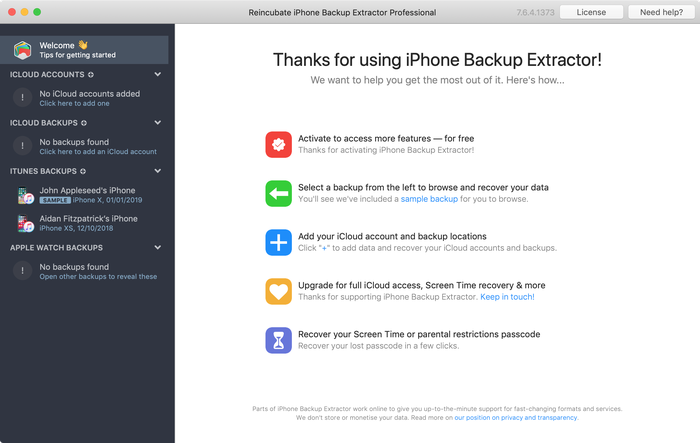
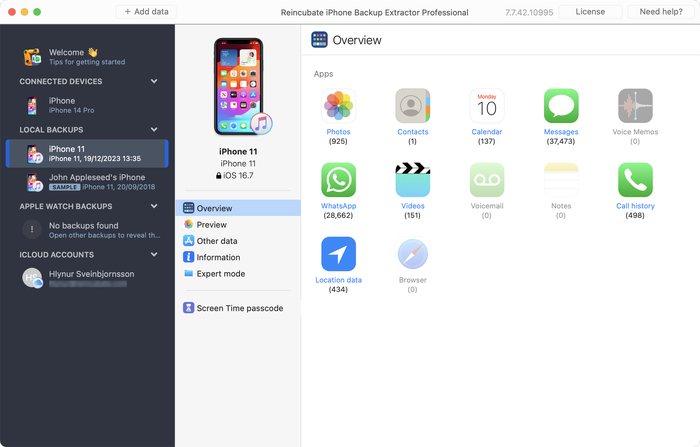
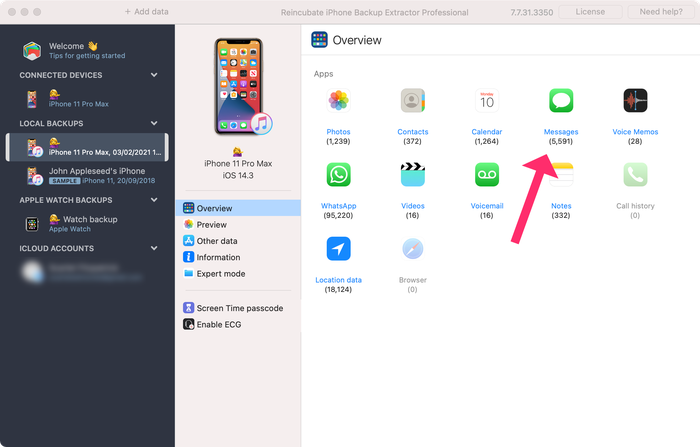
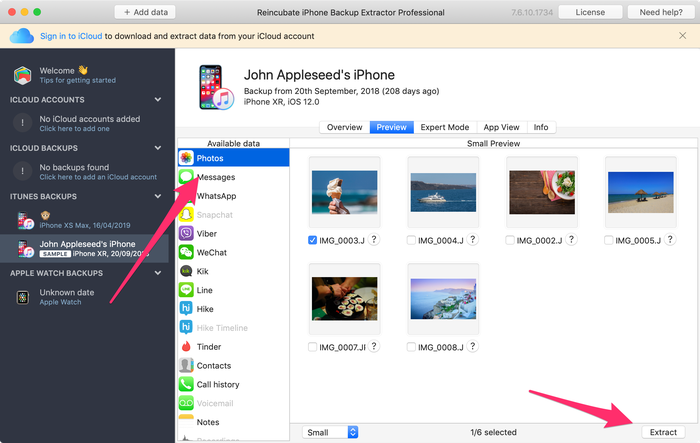
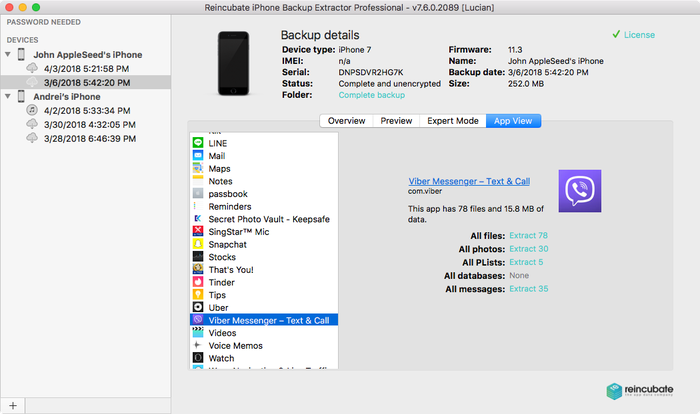
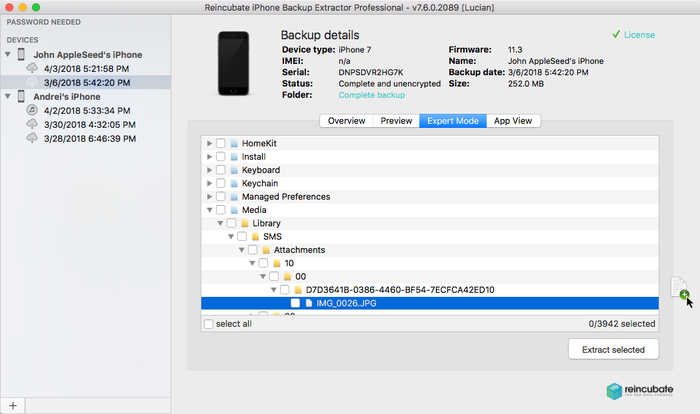
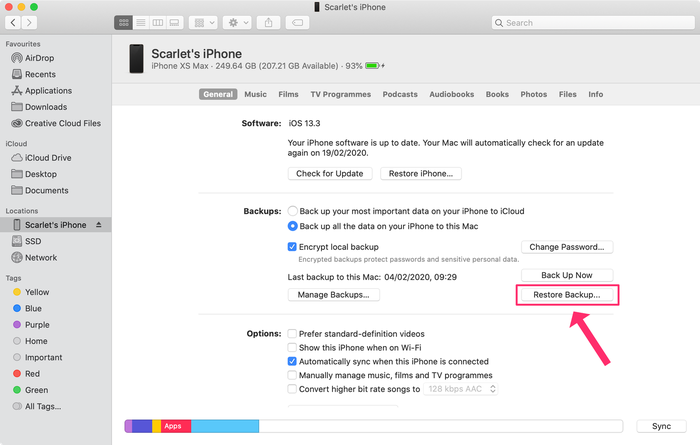


by Peter
Can i recover a file from a previous backup with this program? Thanks for the answer.
reply by: Reincubate Support
Hi Peter, you sure can. Drop us a note on live chat if you need help.
by Henry Chen
I have similar situation with this one, I backed up my old phone yesterday to itunes not knowing it was encrypted and when I went to restore my new phone to that backup I was unable to because I do not have the encryption password. Talk to APPLE support, not much help, please help.
reply by: Reincubate Support
Hi Henry, check our our guide to recovering a lost iPhone backup password. Good luck!
by Rainer (Austria)
Great software, saved me lots of trouble when iTunes backup didn't work (kept receiving message "connection to iPhone was lost" and spent several hours trying to fix it on my own). Then downloaded Backup Extractor and was able to recover all data I already considered lost in a breeze. Made my day. 5 Stars and a cordial "thank you!" to the developers.
by John St John
How can i recover just one app that has data? I went thru iOS 9.0.1 > 9.0.2 hell with my 5S and had to reload the whole thing as the 9.0.2 backup would not load.
reply by: Reincubate Support
Hi John, thanks for commenting. That's pretty straightforward: export the files from your device's backup to your PC or Mac. Take a newer backup of your current device, then use iPhone Backup Extractor to patch those exported files into the newer backup. Restore it, and you'll see the files are there. 👍
by Lynne Matera
Can I recover old voicemails from my iPhone 4 to iPhone 6 I already turned in 4. My father passed away and I forgot to get them off old phone.
reply by: Reincubate Support
Hi Lynn: do you have a backup from the iPhone 4?
by Tammy
I need help I can't seem to remember my restrictions passcode. Please help me.
reply by: Reincubate Support
Hey Tammy -- check out our guide for restrictions passcode recovery here.
by Gazpie
When I use the backup extractor the status of the backup says incomplete an encrypted. I can't extract the photos from the backup. Is there a way to recover the photos?
reply by: Reincubate Support
Oh no! That sounds like a corrupt backup. Check this out.
by Mark Hiles, Sr.
How do I recover the 20K in lost data to the iOS 7.1 update? Apple admits nothing, and I am out all of my app data. The only thing that restores are the contacts and other data of the sort. No app data restores at all. How do I get my data back or sue Apple for this?
reply by: Reincubate Support
Hi Mark, thanks for commenting. We're sorry to read about that. We've got a guide on recovery of data from iTunes backups here. Hopefully that's helpful -- if not, drop us a note.
by Mr Marcus
Heello do u guys know how i can kill the code on my iphone 5s? i mean i can remember the code. please help
reply by: Reincubate Support
The restrictions passcode? If so, yes. See here.
by Old Suit
I have an old iPhone 4 and no desire to upgrade. iOS 7 added .2GB of bloat to my phone and no added functionality. I hate that Apple forcefeeds apps down your throat whether you want them or not. I'd much rather have the extra space for music or apps of my own choosing. But, alas, it seems as if the era of customization is over and the era of the herd mentality has come full storm!
by ron
please help.I want make a update for my backup Extractor. i have Version 3.4.2 please help
reply by: Reincubate Support
@Ron; you can get the latest version here.
by Bridget75
I am trying to extract the restrictions passcode I set on my son's Ipod under the restrictions....I read a blog that said to extract the file from: Library, Preferences,
com.apple.springboard.plistHowever I found no 4 digits in there....which file is this code in? Would appreciate any help!! Thanks!!reply by: Reincubate Support
Hey Bridget, thanks for asking. We have a guide on how to do this. That should sort you out. 🙂 Reach out if not.
by adam
The phone records I need are further back than one hundred in my back up. How do I get them.
reply by: Reincubate Support
Adam, please reach out to us directly through the support page and we'll help!
by Simon McAllister
Yes, yes, yes! All very good having iOS 6 but..... will it have the basic privacy features that are missing? e.g. Blocking incoming calls & or SMS messages from numbers that I choose... Oh and conditional call forwarding - I might want a certain caller to be answered by my voicemail every time they call.
Because Apple 'decide' how I should use my phone, it's not appreciated that these features are not present already. Also, it's frustrating enough for users not to have a method in place to ASK for this functionality! And before anyone comments; No, there aren't any app's that block calls and SMS!! ;D
by Ean Myers
The free backup extracter will only pull 2 of the same photos out repeatedly when it says it detects 476. HELP? please
reply by: Reincubate Support
Hi Ean: if you're on the free edition, do the extraction from preview mode or expert mode. That'll let you select a different couple each time. 🙂
by Peter
Hi guys, I use Numbers on my iPad. Been working great for sometime. Went into numbers just now and ALL my spreadsheets are gone? I would imagine that iCloud has managed to loose them for me? Please assist and let me know if it is possible to get them back.
I have. MacBook Pro, iPhone4 and iPad2 all running the latest updated software.
Thanks
Peter
reply by: Reincubate Support
Oh no, that doesn't sound good! There are a few approaches to use here. If you log in to iCloud.com and hit "Account settings", you'll see there's a "Restore files" option. That should let you restore any recently-deleted iCloud files.
by Brittany
I just wanted to say thank you so much. I just downloaded your software on my old computer to recover precious lost voice messages from my old iPhone that were left for me by my grandmother who passed away. You have no idea how much this means to me! Thank you, thank you, thank you!
reply by: Reincubate Support
Thank you for sharing this. It means a lot to us. ❤️
by Jim
I have tried extracting backups from an iPhone 4 with iOS5 and the Contacts, Calendar and SMS messages are not showing up. Anyone else having this issue.
reply by: Reincubate Support
Hi Jim, I don't think so. Drop us a note at [email protected] and we'll get things sorted out for you.
by Andy
Hmm. I've been using my iPhone 4 on iOS 5 Beta 4 (also the corresponding iTunes beta) and whilst your software does still backup, I consistently get 0 SMS in the backup file. Any ideas?
reply by: Reincubate Support
Hey Dave, we've just shipped an update for the message changes in the iOS 5 betas. Please download the latest version and take that for a spin.